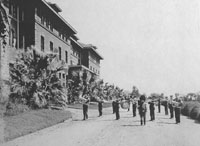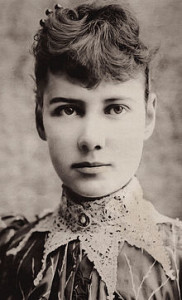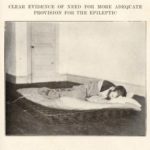Though Lunacy Commissions and other visitors who provided oversight to asylums could be misled (see last post), word of actual conditions in an asylum nonetheless leaked out. Sometimes attendants talked, but more often, former patients spoke out against any abusive or inhumane conditions they had endured during their stays. Though these accounts were often dismissed, the public did become curious about conditions in insane asylums and at times speculated wildly about what might actually be happening to patients. At times, newspapers provided on-the-spot reporting by sending someone into an asylum undercover.

Masonic Temple Band Visiting Stockton to Provide Music, courtesy Bank of Stockton Historical Photo Collection
In 1887, New York World reporter, Nellie Bly, famously entered the notorious Women’s Lunatic Asylum on Blackwell’s Island as a patient. After ten days, her editor obtained her release, and Bly wrote a scathing expose that shot her, the newspaper, and the asylum to fame. As a result, the asylum was investigated and conditions improved for a time. Perhaps in imitation, the San Francisco Examiner in 1888 sent a reporter to the Stockton State Mental Asylum to get its own local story. This reporter stayed several weeks in the asylum, but unlike Bly, found little amiss. He did not find the filth and degradation he expected, nor the brutality and mistreatment he anticipated. Though the reporter did witness “two acts of brutality,” he believed that they were in direct violation of the asylum’s rules and not a common occurrence.






